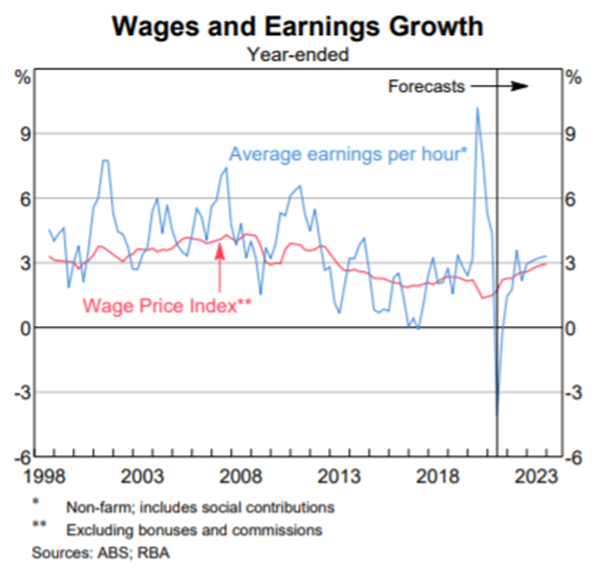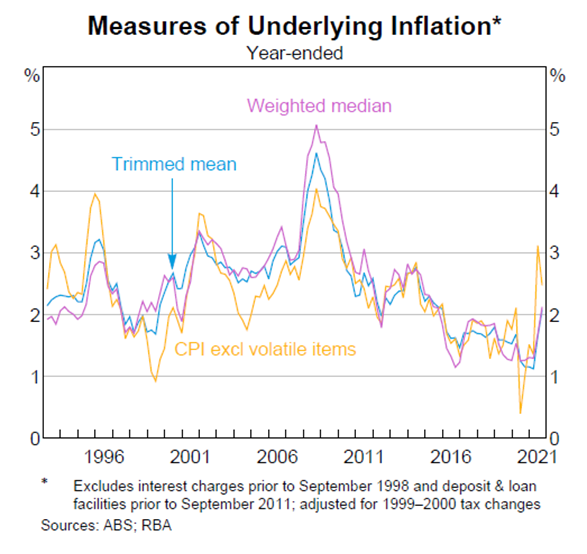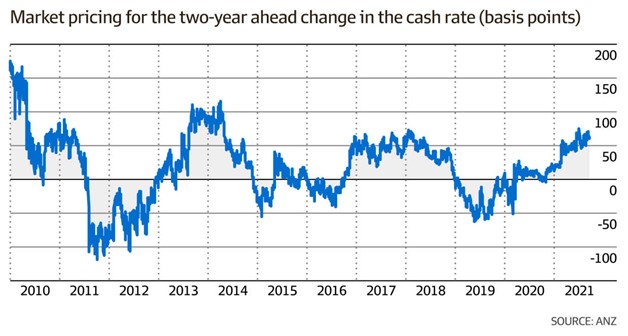Generating alpha from fixed income today
It has been a challenging year for fixed income. The asset class has historically been a go-to option for risk-averse investors or investors seeking an additional income stream. However, it has recently struggled with significant bouts of capital volatility seen in the broader market from time to time, coupled with record low-income yields being provided by these instruments.
Recent uncertainty surrounding economic recovery and the outlook for inflationary targets have also driven an unprecedented level of volatility throughout the sector.
While the question remains "Where to from here for the fixed income sector?”, the asset class still in our eyes holds a critical role in any diversified and balanced portfolio. While it may not be your traditional buy-and-hold strategy, there are alternate ways to generate competitive income from a primarily fixed-income portfolio. Read on to learn how.
The current inflation conundrum
When the Reserve Bank of Australia (RBA) lowered the official cash rate (OCR) to 0.1% in December 2020, Governor Philip Lowe announced that inflation must be seen sustainably within the 2 to 3% target range before they would consider increasing the OCR.
In practice, this would require annual wage growth to be materially higher (above 3%) than it is currently – in which case, the cash rate would not see an increase until 2024 at the earliest.

However, the recent release of stronger-than-expected data signifies the economy is rebounding faster than initially conceived, causing a dichotomy of views as to when Australia will hit these inflationary targets, notwithstanding global pressure and the eventual cash rate rise.
This has been combined with the ongoing detection of new COVID-19 strains, cyclical record growth in housing prices, and rising energy prices – the latter of which has seen a meaningful cost imposed on businesses and consumers. While price and wage stability will eventually be restored, it will take time.
The Australian Bureau of Statistics (ABS) reported rising inflation figures for the September quarter, with the RBA’s preferred measure of underlying inflation, the trimmed mean, surpassing the lower bound of the RBA’s inflation hurdle of 2%.

The RBA acknowledged that inflation for the September quarter was higher than in recent years and that they are expecting a further, yet gradual increase looking forward. The RBA consequently withdrew their statement that the OCR would not rise prior to 2024, and announced an increase in the OCR throughout 2023 is possible if warranted.
However, they made their position clear that these spouts of positive economic data are transitory, not sustained. Despite this, many economists, market analysts and financial journalists have dismissed the RBA’s statement under the belief that this indicates more permanent growth.
The release of this data caused a shift in market sentiment towards the possibility of a more sudden shift in monetary policy by the RBA – and many debt instruments across the fixed income market repriced accordingly.

The Australian Government bond rate, for example, increased by 30 basis points (bps) within the final week of October. This rapid movement resulted in a significant shift in the price of fixed income instruments, and capital depreciation across several fixed interest sectors sensitive to changes in yields. This contributed to an increased level of volatility and a widening of credit spreads throughout the credit market.

David Plank, Head of Economics at ANZ, noted that market pricing is aggressively disagreeing with the RBA’s current stance and that the market will continue to challenge the RBA’s forecast in the near future.
We are already finding that market pricing is being led, not by a direct fundamental basis, but by a belief on the timing of future OCR hikes. Current markets are already pricing in three to four rate hikes by the end of 2022.
So, where to from here for the fixed income sector?
We believe there will be sustained inflationary pressures at some point, but the question remains as to what level it will get to and how quickly, and that will be reflected in market rates.
The 10-year bond rate has risen rapidly over the past year, driven by the re-opening of the economy and encouraging macroeconomic data. This is expected to continue into 2022 as the COVID-19 recovery continues. However, what will sustain growth going forward? That is where the market is less clear.
Generating income from fixed-income investments in the current environment
In the current environment, characterised by uncertain inflation, an extraordinarily low cash rate of 10 basis points, and broader market volatility, is it still worth investing in the fixed income sector?
In short, yes. We believe fixed income still holds an important place in a diversified portfolio subject to your risk appetite and investment objectives, and you can still achieve competitive returns in the current environment - if you know where to look.
The current volatility is presenting pockets of opportunity and an ability to generate alpha, a return above the benchmark, within the fixed income sector - provided you are familiar with the space you are investing in and possess both a strong understanding of and compensation for risk.
That is where active management and strategic asset allocation across multiple income streams and sources is critical. Below are a few things to keep in mind:
A focus on capital preservation is key
The fixed income sector has an innate focus on capital preservation and an ability to moderate the level of risk and volatility within a broader investment portfolio. It is important to take advantage of this in times of volatility to a degree which suits your tolerance for risk. Investments in lower risk or investment-grade securities can set a solid foundation for your investment portfolio.
Enhance returns, but do not disregard adequate risk management
Allocations to higher-yielding investments, whether from a fundamental standpoint (such as high-yielding bonds, fixed income of a higher risk nature, or an investment in another asset class) or based on extensive market analysis, could help generate competitive returns in the current low-rate environment. However, it is important to understand and accept the higher level of risk this often entails.
In environments exhibiting increased volatility and nonlinear growth trends, portfolio diversification is critical to effective risk management. Investments which lean into different sectors and types of risk, such as sovereign and credit risk, can help shield your portfolio from the impacts of dips, slowdowns, downfalls or adjustments for any one investment type.
The Trilogy Enhanced Income Fund’s competitive advantage
Another option to consider is a managed fund in which investors can rely on the expertise of professional fund managers to actively identify and capitalise on market opportunities or temporary mispricings that arise and to make informed decisions about timing and asset selection to ultimately generate competitive returns.
The Trilogy Enhanced Income Fund (Fund) utilises strategic allocation across a broad range of fixed interest investment types and strategies to generate competitive, risk-adjusted returns for investors in any market. The Fund’s returns are enhanced with a ~35% portfolio allocation to our mortgage trust, the Trilogy Monthly Income Trust.
The Fund’s strategic allocations work together to provide a competitive return, enhanced by exposure to the growing property development and construction loan origination market while maintaining a focus on capital preservation.
Trilogy Funds | Building wealth together
Trilogy Funds is one of Australia’s leading fund managers and financiers of property-based investments. We’ve been building wealth together with Australian investors, advisers, developers and brokers for more than 23 years.
Do you think an investment in the Trilogy Enhanced Income Fund could suit your portfolio? Find out more here.
1 topic

